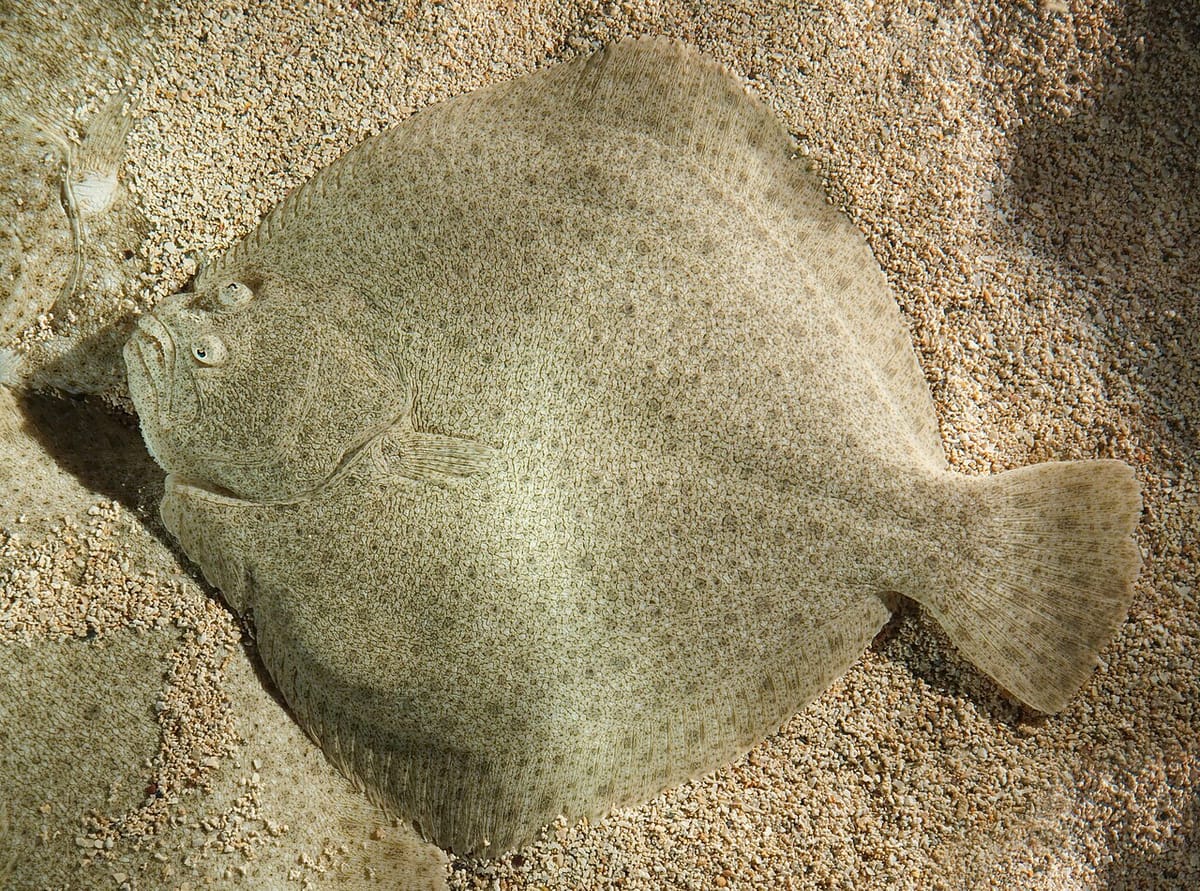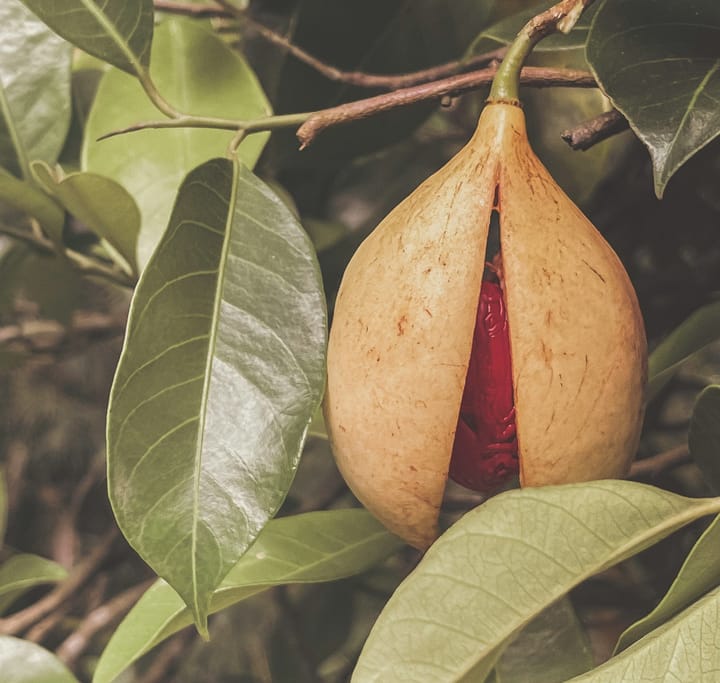Turbot: The Diamond-Shaped Delicacy That Rules Fine Dining
Discover the majestic turbot, a diamond-shaped flatfish commanding royal prices in fine dining. This "King of the Sea" remains one of the most coveted seafood delicacies due to its exquisite taste and limited availability.

Turbot (Scophthalmus maximus) has long been revered as one of the most prized fish in European cuisine, earning its reputation as the "King of the Sea."
This remarkable flatfish, with its distinctive diamond-shaped body and delicate flavor, commands premium prices in restaurants and fish markets worldwide.
Let's explore why this seafood delicacy maintains such high market value and discover what makes it truly special.
The Biology and Habitat of Turbot
Turbot belongs to the family Scophthalmidae and is a large flatfish species that can grow up to 1 meter in length and weigh up to 25 kilograms.
Unlike many other flatfish, such as halibut and marbled flounder, turbot has a nearly round body shape when viewed from above, giving it its characteristic diamond appearance.
The fish starts life swimming upright, but as it develops, its left eye migrates to the right side of its head, and it begins to swim on its side – a fascinating transformation that occurs in all flatfish species.
These magnificent creatures primarily inhabit the northeastern Atlantic Ocean, from Norway to the Mediterranean Sea, and the Black Sea.
They prefer sandy, muddy, or mixed bottoms at depths ranging from 20 to 70 meters.
Young turbot begin their lives in shallow coastal waters before moving to deeper areas as they mature.
Why Turbot Commands Premium Prices
The high cost of turbot can be attributed to several key factors that influence both its production and market value:
Limited Wild Stock and Strict Quotas
Wild turbot populations have faced significant pressure from commercial fishing over the decades.
To prevent overfishing, strict quotas have been implemented across European waters.
These conservation measures, while necessary for species preservation, naturally limit the supply of wild-caught turbot in the market, driving up prices.
Complex Aquaculture Requirements
While turbot farming has become more common, particularly in Spain, France, and China, the process is highly sophisticated and expensive.
Turbot require specific environmental conditions to thrive in captivity, including precise water temperature control (between 14-18°C), high water quality, and specialized feeding regimens.
The infrastructure and expertise needed for successful turbot aquaculture contribute significantly to its market price.
Slow Growth Rate
Turbot have a relatively slow growth rate compared to many other farmed fish species. It typically takes between 24-30 months for farmed turbot to reach market size (around 1.5-2 kg).
This extended growing period means higher production costs in terms of feed, maintenance, and facility operation, which ultimately reflects in the final price.
Culinary Excellence and Market Demand
The exceptional culinary qualities of turbot make it highly sought after by top chefs and discerning consumers:
Superior Meat Quality
Turbot flesh is renowned for its firm, white, and flaky texture, combined with a subtle, sweet flavor that sets it apart from other fish. The meat has a high protein content and beneficial omega-3 fatty acids while maintaining a low-fat profile. What makes turbot particularly special is its unique collagen content, which gives the cooked flesh a succulent, almost creamy texture while remaining firm.
Versatility in Preparation
Professional chefs prize turbot for its versatility in the kitchen. The fish can be prepared through various cooking methods – grilled, poached, baked, or pan-fried – while maintaining its delicate flavor and texture. The bones and trimmings are also highly valued for making exceptional fish stock, ensuring minimal waste of this precious ingredient.
Culinary Heritage Across Cultures: The Engawa Connection
While turbot is renowned in European cuisine, it also holds a special place in Japanese gastronomy, particularly in the preparation of "engawa."
Traditionally, engawa refers to the muscular fin edges of flatfish, most commonly from flounder (hirame).
However, high-end Japanese restaurants increasingly prize turbot's engawa for its superior texture and rich, buttery flavor.
This muscular portion, found along the fins of the turbot, offers a distinctive mouth-feel that combines firmness with a delicate tenderness.
When served as sashimi or lightly torched nigiri, turbot engawa provides a prized contrast of textures - crisp yet creamy - that commands premium prices in Japanese fine dining establishments.
This cross-cultural appreciation further cements turbot's status as a globally celebrated seafood delicacy.
Historical and Cultural Significance
The turbot's reputation for excellence has deep historical roots. In medieval Europe, it was considered a fish fit for royalty and nobility.
This historical prestige continues to influence its market position today, particularly in fine dining establishments and luxury seafood markets.
Interesting Facts About Turbot
Eyes That Move During Development
During their early development, turbot undergo a remarkable metamorphosis where one eye physically migrates across the head to join the other eye on the right side. This process takes place when the fish is still a larvae, allowing it to adapt to its bottom-dwelling adult life.
Camouflage Capabilities
Adult turbot possess extraordinary ability to change their coloration to match their surroundings. This adaptation makes them highly successful predators and helps them avoid their own predators. Their upper side can adjust its pigmentation within minutes to match the seafloor, while their underside remains white.
Size and Longevity
While most commercial turbot weigh between 2-4 kg, they can grow much larger in the wild. The largest recorded turbot was 25 kg, and these fish can live up to 25 years in natural conditions. However, such specimens are extremely rare due to fishing pressure.
Sustainable Future and Market Outlook
The future of turbot consumption increasingly relies on aquaculture advancement.
Spain has emerged as Europe's leading turbot farmer, developing sophisticated recirculating aquaculture systems (RAS) that minimize environmental impact while maximizing production efficiency.
These systems, while expensive to establish and maintain, represent the future of sustainable turbot production.
China has also entered the turbot farming industry aggressively, becoming the world's largest producer.
However, European turbot still commands higher prices due to perceived quality differences and established market preferences.
The combination of limited wild stocks, complex farming requirements, and unwavering demand from high-end restaurants and consumers suggests that turbot will likely maintain its premium price point in the seafood market.
However, continued advances in aquaculture technology may eventually help make this prized fish more accessible to a broader market while ensuring its sustainability for future generations.
Conservation Status and Responsibility
While turbot isn't currently listed as endangered, responsible consumption remains crucial.
When purchasing turbot, consumers should look for sustainably farmed options or wild-caught fish certified by organizations like the Marine Stewardship Council (MSC).
This helps ensure the long-term viability of both wild populations and the fishing communities that depend on them.
The story of turbot is one of luxury, sustainability challenges, and culinary excellence.
Its high price reflects not just its superb eating qualities but also the complex infrastructure required to bring it from sea or farm to plate.
As we continue to appreciate this remarkable fish, supporting sustainable practices becomes increasingly important to ensure future generations can also enjoy the "King of the Sea."


